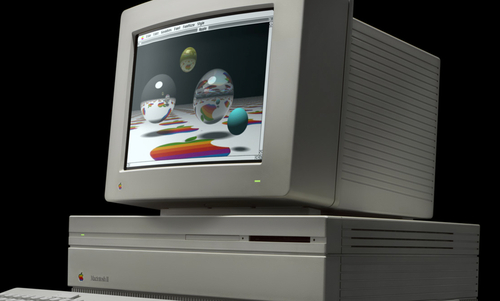In November of last year I upgraded my laptop to a new Macbook Pro Retna 15″ from the first generation Macbook Pro from 2006.
Uncategorized
I purchased a new Apple MacBook Pro 15.4-Inch Laptop with Retina Display late last year, to replace my EIGHT year old Macbook Pro 1,1. After using the new one for several months, I don’t know how I managed to tolerate using the old one for so long. Everything on my new Macbook Pro just flies. Well, almost everything.
Mail for OS X Mavericks always seems sluggish. For an app that I spend way too much time in, it’s frustrating to have to wait for it to keep up with simple things like replying to an email. Disabling animations helps a little. I downloaded this plugin that disable’s Mail animations and now Mail now feels a tad bit quicker.
I hope Apple gets to working on making Mail more responsive in future updates.
Apple has created a page celebrating 30 years of the Macintosh. Beautiful photographs of Macs in the way that only Apple can do.
2CELLOS Luka Sulic and Stjepan Hauser performing their arrangement of Every Teardrop Is a Waterfall by Coldplay on 1 cello!
They’re making their debut with the Kentucky Symphony Orchestra this Saturday, November 2 at Florence Baptist Church at Mt. Zion. Get your tickets here. After seeing this video, I’m buying my tickets now!
For more videos visit the 2CELLOS YouTube Channel
Yatzer.com: Great Escapes On Planet Earth
My future travel destination list just got a lot longer!
NYTimes.com: A Lab-Grown Burger Gets a Taste Test
A hamburger made from cow muscle grown in a laboratory was fried, served and eaten in London on Monday in an odd demonstration of one view of the future of food.
In vitro meat. Mmmmm.
I understand the driving force behind this. Meat production today takes a great deal of resources. If a way is developed to cheaply produce meat with a smaller environmental footprint, more people can have meat more often.
The science is interesting- this is one step closer to the food replicators in Star Trek. But, the main question that I have is about the quality of the meat and could we ever trust the people or companies that grew it. Existing processed foods are full of ingredients that are added not because they are good for you, but change the appearance, make it cheaper, or last longer. I can see this happening with cultured meat. Maybe snake meat cells replicate more quickly- what is stopping manufacturers from adding it to the mix? Companies already do not want to tell us if their product contains GMO’s. I definitely wouldn’t trust the companies to tell us how meat is grown.
SI.com: The story behind football’s innovative yellow first down line
While the line looks simple on TV, the technology behind it is very complex. Sensors were placed on the three main game cameras (at midfield and the two 20 yard lines), capturing the pan, tilt and zoom movements of those cameras 30 times a second. A three-dimensional, virtual model of each field had to be constructed, with the exact measurements of the crown of the field (the center of the field is always higher, for drainage, than the sides and ends, but the precise levels vary in each venue). An exhaustive color palette had to be produced on the fly as the game progressed, so that the green pixels of grass the yellow line replaced would be exactly the “right greens” even as shadows crossed the field and changed the grass hues — an essential feature to assure replacing only the green blades of grass and not the green threads of a Packers or Eagles jersey.
I’ve wondered at how this was done and it’s a lot more complicated than what I thought. The addition of this line really did revolutionize the watching experience.
NYTimes.com: U.N. Expert Calls for Halt in Military Robot Development
“War without reflection is mechanical slaughter,” said Christof Heyns, the United Nations special rapporteur onextrajudicial, summary or arbitrary executions.
“A decision to allow machines to be deployed to kill human beings worldwide — whatever weapons they use — deserves a collective pause,” he told the Human Rights Council in Geneva.
This is a bad idea. Science fiction explores the issues with automated killing machines, and some general themes exist.
1. Control- If you think you control something completely, you don’t.
2. Logic- Robots are more logical than humans and will some day realize that all humans are the enemy.
A line should be drawn now before artificial intelligence technology catches up with science fiction. Our technology has grown by leaps and bounds and it’s probably sooner than we think.
The scary part of this is that there are actually people that think killing robots are a good idea.
Supporters of the robots say they offer a number of advantages: they process information faster than humans, and they are not subject to fear, panic, a desire for revenge or other emotions that can cloud human judgment. Robots can be used to acquire more accurate battlefield data that can help to target fire more precisely and in the process may save lives.
NYTimes.com: The Dutch Prize Their Pedal Power, but a Sea of Bikes Swamps Their Capital
NYTimes.com: The Dutch Prize Their Pedal Power, but a Sea of Bikes Swamps Their Capital
It seems that the Dutch have different problems than we do. I have never seen as many bikes in one place as there are here.
From momentummag.com: Intersection Design – The Dutch Way
Here’s the way the Dutch deal with intersections with bikes and automobiles. Dedicated bike lanes and turning lanes make biking much safer and appealing.



